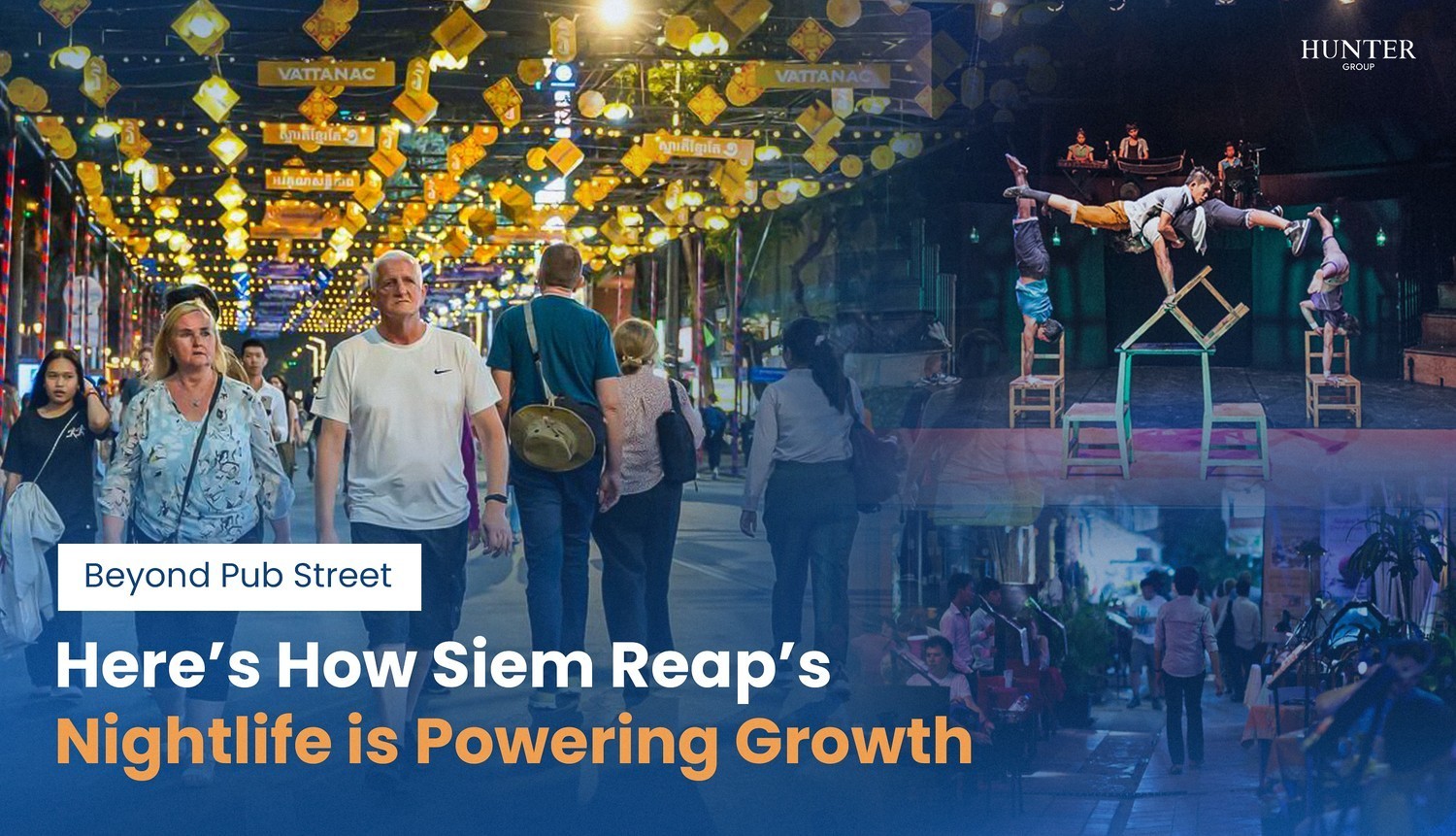By the time the sun dips behind the trees of Angkor Wat, Siem Reap changes its rhythm, but surprisingly, there isn’t much to do and see after dark.
Despite being one of Cambodia’s most
visited destinations, Siem Reap’s nightlife remains surprisingly
underdeveloped. Most cafés close by 7 PM, and restaurants start winding down by
9. Beyond a few bars and clubs near Pub Street, there isn’t much left to do.
Still, the demand is right there, walking the streets every night.
According to the Ministry of
Tourism, in 2024 alone, more than 3.9 million international tourists
visited Siem Reap, a 54% increase from the previous year. Angkor
Archaeological Park generated over $41 million from ticket sales in 2024,
according to its report. The new Siem Reap International Airport welcomed 1.3
million passengers in its first 11 months of 2024. Tourists are not just
returning; they are staying longer, exploring more deeply, and seeking
experiences beyond temples. The untapped night economy presents an opportunity
for investors to capture significant value.
An average tourist in Siem Reap spends around, $50/day for a budget traveler, $100–$150 per day for mid-range, and $250/day for top-end travelers, according to Lonely Planet. But spending may rise when visitors are offered more variety and engaging experiences. The residents are also seeking cozy spots to relax, dine, or socialize. This highlights that Siem Reap’s after-dark economy could bring in millions of dollars in additional revenue each year. While Pub Street pulses with energy for a few hours, much of the city’s untapped potential lies beyond it.
Walking through Wat Bo or along the
riverside at 9:30 PM, you will notice small restaurants and coffee shops turn off their
lights. Even Pub Street, the heart of Siem Reap’s nightlife, feels like it’s
holding its breath, lively for a few hours, then fading by midnight. That’s two
to four hours of business lost each night, multiplied across hundreds of venues.
Siem Reap has everything it needs to
change this: culture, art, people, and atmosphere. With the right investment,
the city can develop a night scene that blends leisure with local life, keeps
visitors engaged, and generates sustainable profits.
For investors looking to tap into
this growing market, here are some ideas worth exploring:
• 24-hour Coffee Hubs:
Perfect for expats, digital nomads, and locals seeking late-night work or
relaxation. With reasonable startup costs, these spaces can quickly reach profitability
and become community hubs.
• Cultural Performances and
Theaters: Venues like Angkor Coex once thrived but closed during the
pandemic. Reviving authentic performances offers high-margin returns while
enriching the city’s cultural landscape.
• Night Food Fairs: A “Walk
Street” style food fair, featuring local vendors and live entertainment, can
attract both tourists and locals. Successful models like Chaktomuk Walk Street
in Phnom Penh are leading the scene.
• Art Exhibitions and Creative
Spaces: Evening galleries or creative workshops add sophistication to the
nightlife while supporting local talent. The newly opened Museum of
Cambodian Modern Art – Sar demonstrates strong public interest.
• Evening Boat Rides: River
boat rides are reserved for festivals, but they could become a nightly
attraction, offering scenic escapes for visitors and locals. Partnerships with
hotels and resorts could drive consistent traffic.
Early investors benefit from a first-mover
advantage. Unlike Phnom Penh, Siem Reap is a tourism-based city with fewer
late-night destinations besides Pub Street, making it easier to capture
customers and establish recognizable brands. With growing tourism and
supportive government interest in extending visitor engagement, the market is
primed for innovation and scalable ventures.
Siem Reap has always been a place of
wonder, not just because of its temples, but because of its people and culture.
For investors, this is not just about opening businesses. It’s about shaping
the city’s second identity, the one that wakes up when the sun goes down.
The demand is here. The lights just
need to stay on.
By Sreyneth Kem
Project Marketing & Communication
